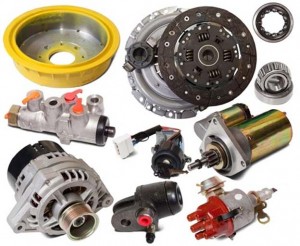Federal safety regulators have revealed that 10s of thousands of American motorists may be driving around in vehicles equipped with counterfeit and likely defective airbags. While the problem may be particularly ironic – and potentially deadly – it’s just the proverbial tip of the iceberg when it comes to the issue of fake auto parts.
The Motor & Equipment Manufacturers Association, for one, estimates as much as $45 billion in parts business could be lost to counterfeits worldwide each year. While industry and government investigators have begun to crack down – General Motors aiding in the seizure of millions of dollars in fake parts each year – significantly more counterfeit auto components and parts still fall into consumers’ hands each year.
(Fake Chinese-made airbags putting American motorists at risk. Click Here for the full story.)
Some of those parts may simply result in cosmetic issues, like an out-of-shape sheet metal panel or a lamp that doesn’t glow with the right color. Some, however, may be deadly, such as axles and airbags that don’t meet factory specifications. And industry officials say many counterfeits fall in-between, such as fake filters that could cause an engine to fail.
So, how can you protect yourself from counterfeit car parts? Here are some helpful tips:
Anyone who has walked down New York City’s busy Canal Street shopping district has seen the sidewalk vendors hawking fake “Rolex” watches for $20. If the price seems too good to be true it almost certainly is. Guangzhou Global Auto Parts, a Chinese company behind some of the fake airbags causing so much trouble offered the devices on the Internet for as little as $50 even though the originals might cost as much as $1,000.
Partsmaker AC Delco offers some other useful tips:
- If you’re not installing the part yourself, ask the person who is to see the part and package;
- If the packaging appears flimsy, lacks the name brand or logo, or has graphics or a name that is similar to, but not quite the same as, those you’re used to seeing, it could be counterfeit;
- But that’s no guarantee, as counterfeiters often use colors, artwork and type fonts on their packaging that are similar to the original;
- In an effort to make counterfeiting even more difficult for imitation parts producers, many parts makers, such as ACDelco now affix distinct marks, such as holographic IDs on certain parts to help distinguish them from fakes.
There are a few other tips to consider, some particularly useful for DIY-ers who might change oil, filters and even brake parts.
Even some big auto parts chains have inadvertently stocked counterfeits. Again, the first tip off can be a flimsy or improperly printed box, or one that might be marked “Cryler” or “AZDelco,” for example. And watch for odd or inaccurate markings on the part itself.
Some fakes are pretty cheesy imitations. Counterfeiters have been known to stuff rags inside filters. And website AeroTruckParts.com notes that “brake pads (may contain) sawdust, compressed grass or other inadequate materials” that should be obvious to even an amateur. Fluids may look funny, perhaps because improper materials, including dies, have been mixed together.
A significant share of parts now come from China and though that country has had a history of Wild West entrepreneurs who disregard copyrights and counterfeit everything from DVDs to car parts it doesn’t mean all Chinese parts are bad. A survey of local auto parts shops in Detroit reveals that much of the low-end equipment they sell is now sourced in Asia.
But experts suggest that legitimate parts makers will have offices operating in the U.S. And if it’s a brand you’re not familiar with and one the parts store might not strongly vouch for you can check with the Better Business Bureau.
Auto parts aren’t always cheap and in a nation conditioned by Wal-Mart and the Web, it’s no surprise motorists – and service shop owners, as well – like to find bargains. But buying online purely based on price can cost you a lot more in the long run.
Some counterfeiters have become good enough to fool the experts – at least at first glance. But they’re usually cutting so many corners that even a vigilant consumer can spot the difference. It’s worth the extra time and effort and could save your engine, perhaps even your life.

